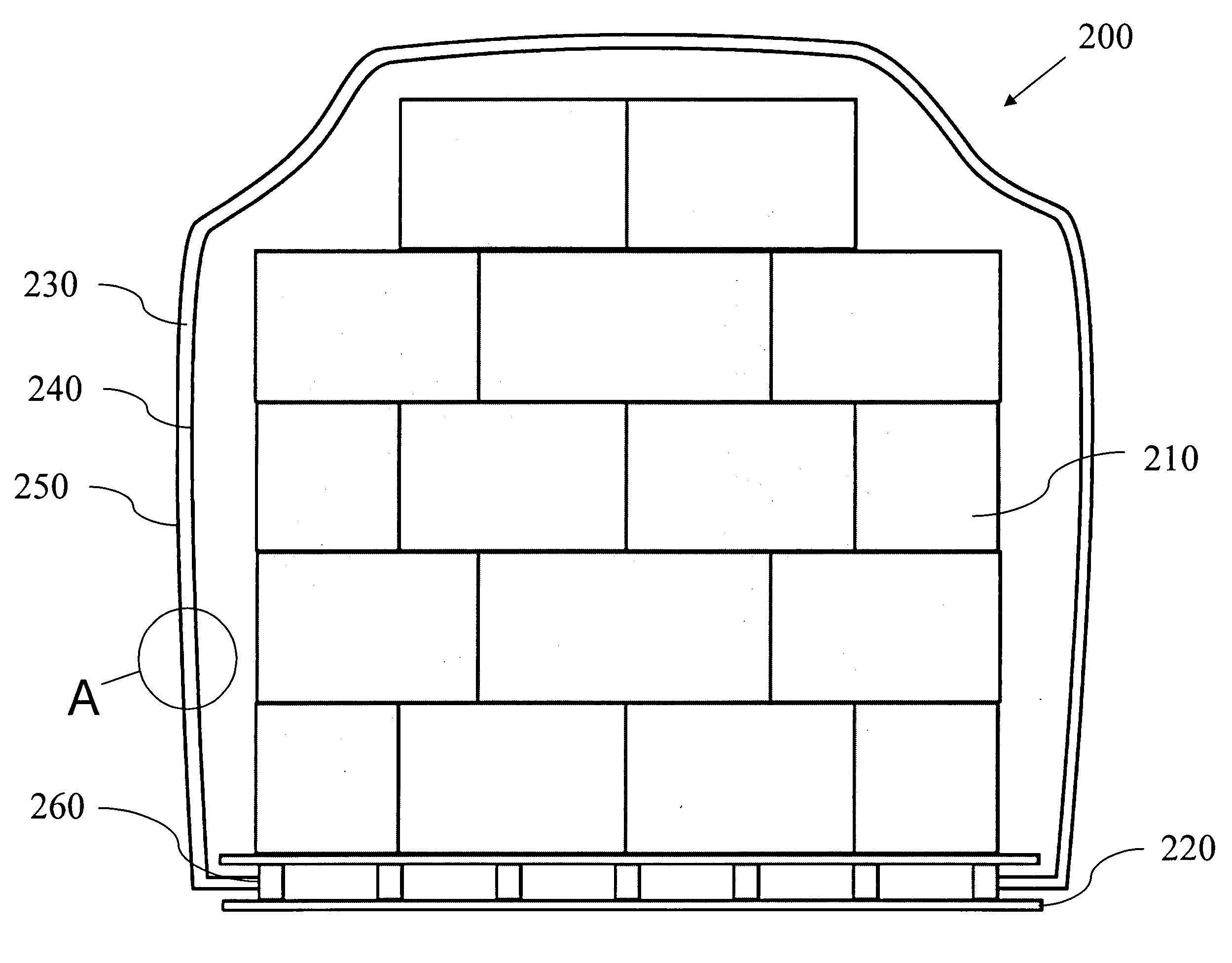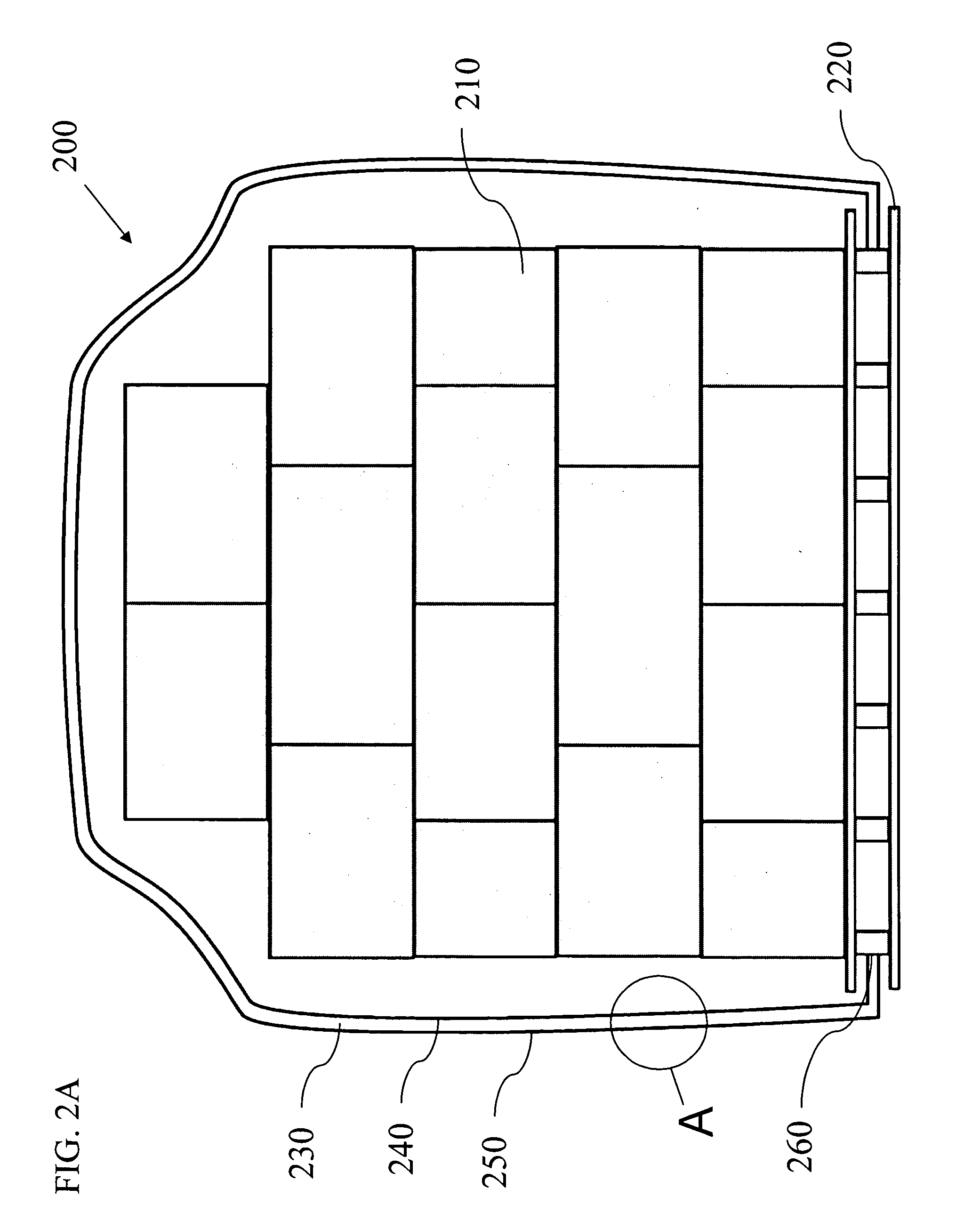Fire barrier fabric and related fire protective systems
a technology of fire barrier fabric and fabric, which is applied in fire rescue, electrical equipment, coatings, etc., can solve the problems of increasing reducing the number of disadvantages and limitations of known intumescent coating materials, and limiting the spread of flames. , the effect of reducing the amount of waste that ultimately resides in landfills and/or impacts the environmen
- Summary
- Abstract
- Description
- Claims
- Application Information
AI Technical Summary
Benefits of technology
Problems solved by technology
Method used
Image
Examples
example 1
[0063]An intumescent fire barrier coating material was prepared by mixing 2750 grams of Multilobe 200 acrylic binder (Rohm and Haas, Philadelphia, Pa.) together with 2555 grams of superfine melamine (DSM Melamine Americas, Inc., Addis La.) in a Cowles Blade mixer (Hockmeyer Equipment Manufacturing, Elizabeth City, N.J.). The combination of Multilobe 200 and superfine melamine was prepared by adding the Multilobe 200 to the bowl of the mixer, setting the mixer speed to slow, followed by slowing adding the superfine melamine. The speed on the mixer was increased while the superfine melamine was added to the mixing bowl to maintain a vortex and good mixing action. After all of the superfine melamine was added, the combination of Multilobe 200 and superfine melamine was further mixed together for 5 minutes on slow speed.
[0064]Using a clean mixer and mixing bowl, 8240 grams of Multilobe 200 (Rohm and Haas, Philadelphia, Pa.) was mixed at slow speed. To the Multilobe 200, 180 grams of a r...
example 2
[0068]The toxicity of the intumescent fire barrier coating material as prepared in Example 1 was measured using the Naval Engineering Standard (NES) 713 Toxicity Test. To conduct the test, a 25 gram sample of the fire barrier material was placed in furnace having a maximum temperature of 1050° C. with continuous monitoring of flame temperature with a thermocouple. The test was conducted at an ambient temperature of 59.3° F., 33% relative humidity, a barometric pressure of 30 in. Hg. The toxicity index of the sample was measured to be 11.9, and the sample emitted the following amounts of gases: 0 ppm of H2S, 57.7 ppm of SO2, 121.6 ppm of HCN, and 357.4 ppm of HCL.
example 3
[0069]A 5.7 gram specimen of the intumescent fire barrier coating material as prepared using the method described in Example 1 and was placed in a cone calorimeter. The specimen was tested according to ASTM E1354 with a heat flux of 35 KW and an exhaust flow rate of 34.7 g / s. This specimen was conditioned at an ambient temperature of 23° C. and a relative humidity of 50% prior to testing. The results of the ASTM E1354 test as collected on three separate specimens were as follows: the time to sustained flame was 8 seconds, the THRR was 0.8 MJ / m2, the average effective heat of combustion was 5.1 MJ / KG, the mass of the specimen after the test was 3.650 grams, the average HRR at 60 seconds was 12.60 KW / m2, the average HRR at 180 second was 4.20 KW / m2, the average HRR for 300 seconds was 2.52 KW / m2, and the PHRR was 99.35 KW / m2. Also, it was observed that the specimens self-extinguished at 17 seconds into the test.
PUM
| Property | Measurement | Unit |
|---|---|---|
| weight percent | aaaaa | aaaaa |
| weight percent | aaaaa | aaaaa |
| temperature | aaaaa | aaaaa |
Abstract
Description
Claims
Application Information
 Login to View More
Login to View More - R&D
- Intellectual Property
- Life Sciences
- Materials
- Tech Scout
- Unparalleled Data Quality
- Higher Quality Content
- 60% Fewer Hallucinations
Browse by: Latest US Patents, China's latest patents, Technical Efficacy Thesaurus, Application Domain, Technology Topic, Popular Technical Reports.
© 2025 PatSnap. All rights reserved.Legal|Privacy policy|Modern Slavery Act Transparency Statement|Sitemap|About US| Contact US: help@patsnap.com



